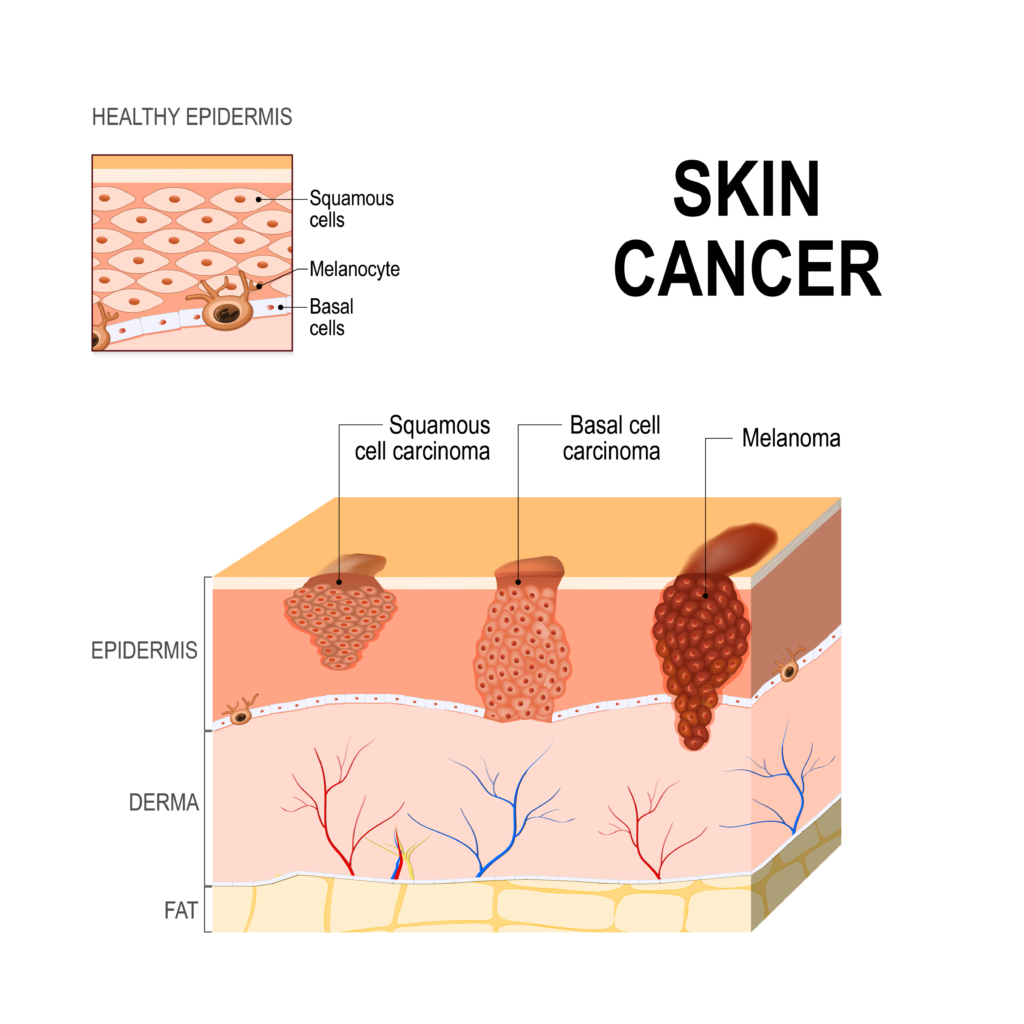Skin Cancer
According to the American Academy of Dermatology, skin cancer is the most common form of cancer in the United States. It is estimated that 1 in 5 people will develop a form of skin cancer in their lifetime.
Skin cancers come in all different shapes and sizes. There are three main types of skin cancer; basal cell carcinoma, squamous cell carcinoma, and melanoma.
One of the easiest and most important things you can do to lessen your chances of developing any form of skin cancer is to protect your skin from the sun’s harmful ultraviolet rays by using sunscreen daily, and wearing sun protective clothing when outdoors.

Basal cell carcinoma (BCC)
BCC is the most common type of skin cancer, affecting an estimated 2 million Americans per year. For most, basal cell carcinoma is not life threatening and when detected early it is highly treatable.
Squamous cell carcinoma (SCC)
SCC is another common type of skin cancer. Squamous cell carcinoma tends to appear on skin that has been repeatedly exposed to the sun over a long period of time. SCC can develop from a precancerous growth called an actinic keratosis (AK). SImilar to basal cell carcinoma, squamous cell carcinoma is highly treatable when detected early.
Melanoma
Melanoma is the most serious form of skin cancer because it can spread from the skin to other parts of the body.
Don't forget to schedule your regular full body skin examination
One of the easiest and most important things you can do to lessen your chances of developing skin cancer is to protect your skin from the sun’s harmful ultraviolet rays by using sunscreen on a daily basis and wearing sun protective clothing.
Please keep in mind the following three things when choosing a sunscreen: Look for broad-spectrum protection – this type of protection protects against BOTH UVA and UVB rays.
You may be thinking, wait a minute?! What’s the difference between UVA and UVB rays anyway?
- Ultraviolet A (UVA) = has a longer wavelength, and is associated with skin aging
- Ultraviolet B (UVB) = has a shorter wavelength and is associates with skin burning
To put it simply….think A–Aging and B–Burning
Always choose SPF 30 or higher – SPF 30 blocks 97% of the sun’s UVB rays. Sunscreen with an SPF greater than 30 can block slightly more UVB rays, though sunscreen cannot block 100% of the sun’s UVB rays.
Make note of “water resistance” SPF –not swimming? Doesn’t matter. ‘Water resistance’ is important in order to stay protected from sweat and water. Whether you plan to swim or not, it is important to choose a sunscreen that has a water resistance rating of 40 or 80 minutes. This simply means that after 40 or 80 minutes of sweating or swimming, you should reapply sunscreen.
Also see
Actinic Keratosis (AK)
Atypical Moles
Melanoma
Skin Cancer Treatment/Removal

